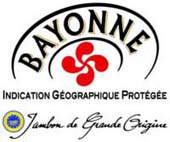Introduction
Welcome to this e-learning resource on Pork Supply Chain Organisation in the EU.
The pork sector in the EU is under a lot of pressure because
- International competition is growing
- Consumer demands are becoming stricter
- Price margins are small
- Sustainability needs to be increased due to limited natural resources
- Use of antibiotics needs to be limited because of increased resistance of bacteria
Price, volume, and quality are heavily interrelated for pork supply chains, while also legislation and quality management systems on EU, national and branch level influence pork supply chain strategy and operations. In addition, the chain-wide sharing of information is becoming essential to increase efficiency, reduce potential hazards, reduce environmental impact, improve traceability, and protect human health.
Current pork supply chains in the EU show many differences, which are characteristic for the contexts in which they operate, the markets they serve, and the products they produce. For example:
- Large commodity chains in different countries are quite similar, but local contexts of national legislation, quality management systems, farmer organisations, and travel distances lead to essential differences
- Smaller supply chains are aimed at producing high quality products or wish to distinguish themselves on animal welfare and human health, like organic supply chains, are organised differently from large commodity supply chains.
Understanding the differences between pork supply chains helps researchers and practitioners to better adapt current supply chains to changing market, consumer, and legislative demands and circumstances. Improving the EU pork sector is also needed to strengthen its competitive position with respect to threats of new competitors like Brazil and China.
This learning resource introduces three cases:
 The fresh pork meat chain in The Netherlands. This chain is a commodity chain covering the largest part of all pigs slaughtered in The Netherlands. The main player in the fresh pork meat chain is VION, the largest meat processor in The Netherlands. The chain is, therefore, called the VION supply chain. The supply chain not only produces for the EU market, but also for the world market. It differentiates itself by offering safe meat not only according to EU and national legislation and quality demands, but also according to additional demands from non-EU countries.
The fresh pork meat chain in The Netherlands. This chain is a commodity chain covering the largest part of all pigs slaughtered in The Netherlands. The main player in the fresh pork meat chain is VION, the largest meat processor in The Netherlands. The chain is, therefore, called the VION supply chain. The supply chain not only produces for the EU market, but also for the world market. It differentiates itself by offering safe meat not only according to EU and national legislation and quality demands, but also according to additional demands from non-EU countries.
 The Ham of Bayonne brand in the South-West, “Adour Basin Region”, of France. Historically, this brand took its name from Bayonne (a Basque city), the export harbour of the local ham. In order to protect the denomination Ham of Bayonne from imitation and usurpation, chain operators, grouped together in the consortium of Ham of Bayonne, operate under the European regulation Protected Geographical Indication (PGI), a sign of quality and origin. Thus, PGI guarantees geographical origin of animals and meat, the quality and the reputation of authentic Ham of Bayonne. Indeed, Ham of Bayonne is a famous regional product with 1000 years of history. The ham is produced with traditional know-how in a typically climate (specific conditions of temperature and humidity by the dry southern wind of the Adour Basin called “Foehn” from the Pyrénée, alternated by the wet west wind from the Atlantic ocean).
The Ham of Bayonne brand in the South-West, “Adour Basin Region”, of France. Historically, this brand took its name from Bayonne (a Basque city), the export harbour of the local ham. In order to protect the denomination Ham of Bayonne from imitation and usurpation, chain operators, grouped together in the consortium of Ham of Bayonne, operate under the European regulation Protected Geographical Indication (PGI), a sign of quality and origin. Thus, PGI guarantees geographical origin of animals and meat, the quality and the reputation of authentic Ham of Bayonne. Indeed, Ham of Bayonne is a famous regional product with 1000 years of history. The ham is produced with traditional know-how in a typically climate (specific conditions of temperature and humidity by the dry southern wind of the Adour Basin called “Foehn” from the Pyrénée, alternated by the wet west wind from the Atlantic ocean).
 The Eichenhof brand in Germany. The Eichenhof brand is coordinated by a farmer cooperative in North-West Germany, Lower Saxony. All actors in the chain are bound by contract to follow a common quality policy under the umbrella of the Eichenhof meat brand programme.
The Eichenhof brand in Germany. The Eichenhof brand is coordinated by a farmer cooperative in North-West Germany, Lower Saxony. All actors in the chain are bound by contract to follow a common quality policy under the umbrella of the Eichenhof meat brand programme.
For each case central themes will be discussed which show similarities and differences between the cases. Through reflective questions and a self-assessment, students are invited to think about these similarities and differences and identify relationships between the different themes. Where possible information on other EU pork supply chains is included as is material that is worth reading to gain more depth.
The e-learning resource on pork chains in the EU is based on an extensive inventory of EU pork chains, in particular pork chains in The Netherlands, Germany, Greece, Hungary, France, and Spain, as well as in South Africa and China. The inventory has been part the work of Module IV of the Q-porkchains project. The three cases presented in this resource have been part of this inventory.